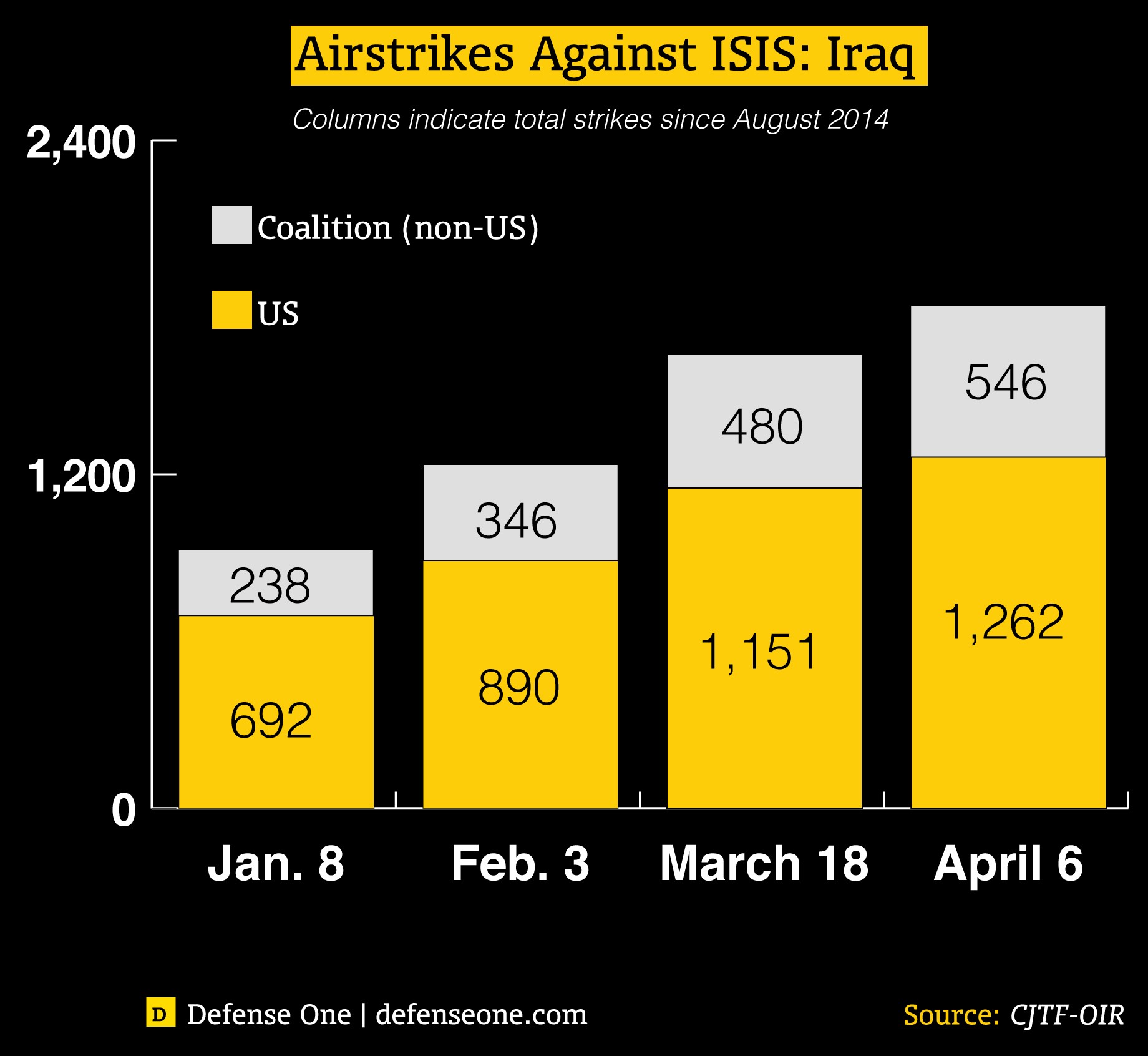There have been bits of good news here and there regarding the U.S.-led war against ISIS. Last week, for example, Iraqi government forces with the help of allied Shiite militias liberated the city of Tikrit from the jihadist terrorists. That was right after U.S. fighter jets and drones were called in to soften enemy emplacements.
But progress is painstakingly slow and complex. As the war metastasizes throughout Iraq, Syria and elsewhere in the Middle East, the duration and cost of the conflict to the United States continue to mount.
Related: Why Only Ground Forces Can Truly Destroy ISIS
The U.S. military so far has spent $1.83 billion on airstrikes in Iraq and Syria through March 12, the Pentagon says, with an average daily cost of $8.5 million, Defense One reported on Monday.
But that figure is deceptively low in gauging the overall costs of battling ISIS and other terror groups. President Obama earlier this year requested $58 billion in emergency spending in the coming fiscal year to maintain a strong military presence in wartorn Iraq and Afghanistan.
Senate and House Republicans, fearing the U.S. effort to degrade and ultimately destroy ISIS is woefully inadequate, voted a week ago to funnel an additional $38 billion to $40 billion through a special overseas contingency operations account used to finance the war effort.
The U.S. military continues to bare the burden of the allied air campaign against ISIS, with American forces caryring out about 70 percent of the air attacks against targets in Iraq and 93 percent of them in Syria. That’s according to figures released by Defense Department officials.
Related: $100 Billion Cost of Fighting ISIS Is Just the Beginning
Obama first ordered limited airstrikes against ISIS in August 2014 as the group threatened to topple the Iraqi government; the month after that, he stepped up attacks in concert with European and Middle Eastern allies. Since then, U.S. and coalition forces have hit 5,548 ISIS targets, including 1,096 fighting positions and 762 buildings, according to the military.
The latest tally includes 15 planes that were destroyed during strikes in late September and October at Taqba Air Field in northern Syria, and a drone that was struck in mid-March. Those aircraft and the drone had been captured by ISIS after a major battle against Syrian government forces.
Here’s a chart showing the number of airstrikes that habve been carried out against ISIS forces by the U.S. and coalition members:
Top Reads from The Fiscal Times:





